|
A stream runs
through Küsnacht. From our flat, it's a five-minute walk upstream
to the pleasant valley, the Küsnachter Tobel, where these pictures
were taken in December 2000. |
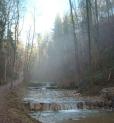
|

|
| The path up the Küsnachter Tobel crosses from side to side of
the river. |
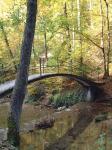 |
 |
| We walk up the Tobel a lot, but never tire of it. It changes with the seasons,
with the weather, and with the time of day. This was taken in the early morning. |
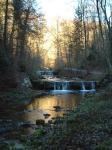 |
| Occasionally one sees larger birds, like this heron, in the river. Friends
have variously identified it as a Great Blue Heron or a Grey Heron. Here's
an undoubted Great Blue Heron on a wildlife website. |
 |
| Much more common in rivers in this part of Switzerland, but much more difficult
to photograph without an SLR, is the "Wasseramsel", or dipper. It sits on a rock, making a bobbing
movement somewhat like a quick curtsey, then dives into the water, presumably to
feed on little aquatic animals. |
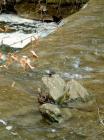 |
 |
| It doesn't migrate, but stays throughout the winter, still diving into the icy water. The river seldom
freezes completely (never, in the ten years we lived there). I find it surprising that such a small bird
can maintain its body temperature while feeding in water which must be very close to zero degrees. |
 |
| In 2006 I borrowed a better camera to take this picture: a Panasonic Lumix which has a good zoom lens, through-the-lens
viewfinder, and an image stabiliser. I'd recommend this camera. |
 |
|
On a hill at one side of the valley are the remains of an old fortification,
called the Ruins of Wulp. The
first building at this site has been
dated to the thirteenth century (before Switzerland existed as a country).
|

|
|
The most famous person to have lived in Küsnacht was Carl
Gustav Jung (1875-1961), the psychiatrist who coined the
terms "introvert" and "extrovert". He is buried in the Jung
family grave - fifth name from the top on this
family headstone. |
 |
|
There's a little park beside the lake,
from which you can look back at the waterfront.
|

|
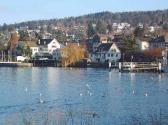
|
| A variety of water birds can be seen on the lake - not just swans, gulls, coots,
and the usual green-headed ducks, but also more exotic ducks like these, which are not
at all timid and appreciate being fed. |
 |
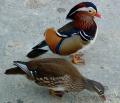 |
| Not all the ducks are so tame. This one seldom comes to shore when people
are nearby. Perhaps it just doesn't like breadcrumbs. |
 |
 |
|
In general, municipal sculpture in Switzerland is as bad as in most other
places
(the centre of Zürich is disfigured by some especially ghastly rubbish).
But Küsnacht's lakeside park is an honourable exception. These views
are the ones you would naturally see as you enter the park, not
carefully-chosen photographic viewpoints.
|

|

|
| The statue of the young woman is one of the best works by the Swiss sculptor Hermann Haller, 1880-1950. His
workshop in Zurich is open to visitors during the summer months, and contains the plaster original of which this is a cast.
Here is a higher-resolution picture of the statue. |
| On a clear day, especially in winter, you can sometimes see the Alps from the
park. This was taken in early January 2005. |
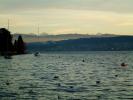 |
| On the opposite side of the lake, linked by a ferry service, is a small town
called Thalwil. We occasionally go there for lunch, because the ferry ride is
short and quite pleasant. Thalwil has a better view of the Alps than Küsnacht has;
this picture was taken from the ferry dock. |
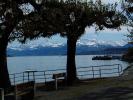 |











































